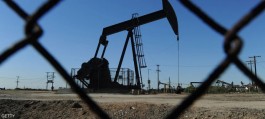Oil prices rose in early trading on Thursday, January 4, continuing to achieve sharp gains from the previous session amid concerns about Middle East supplies following the halt of production in a field in Libya and escalating tensions due to Israel’s war in the Gaza Strip.
By 0101 GMT, Brent crude futures rose 33 cents, or 0.42%, to $78.58 per barrel. US West Texas Intermediate crude rose 40 cents, or 0.55%, to $73.10.
Both benchmarks rose yesterday, Wednesday, by about 3% upon settlement, the first rise in five days, and US crude witnessed the largest daily percentage increase since mid-November.
Yesterday's protests led to a complete cessation of production in Libya's Sharara oil field, which can produce up to 300,000 barrels per day.
The Sharara field, one of the largest fields in Libya, has been a frequent target of local and broader political protests.
Concerns about shipping in the Red Sea also remained after the Iran-aligned Houthis said on Wednesday that they had targeted a container ship heading to Israel.
US Central Command said the armed group fired two anti-ship ballistic missiles in the southern Red Sea the day before.
The market also received support from data from the American Petroleum Institute, which showed that US crude inventories fell by 7.4 million barrels in the week ending December 29, which is double the decline expected by analysts polled by Reuters.
However, gasoline inventories rose by about 6.9 million barrels, versus expectations of a decrease of 200,000 barrels, and distillate inventories increased more than expected.
The Organization of the Petroleum Exporting Countries (OPEC) confirmed that cooperation and dialogue within the OPEC+ alliance will continue, after OPEC member Angola announced last month that it would withdraw from the organization.
It was announced that a meeting of the group would be held on February 1 to review the implementation of the latest oil production cut.









































